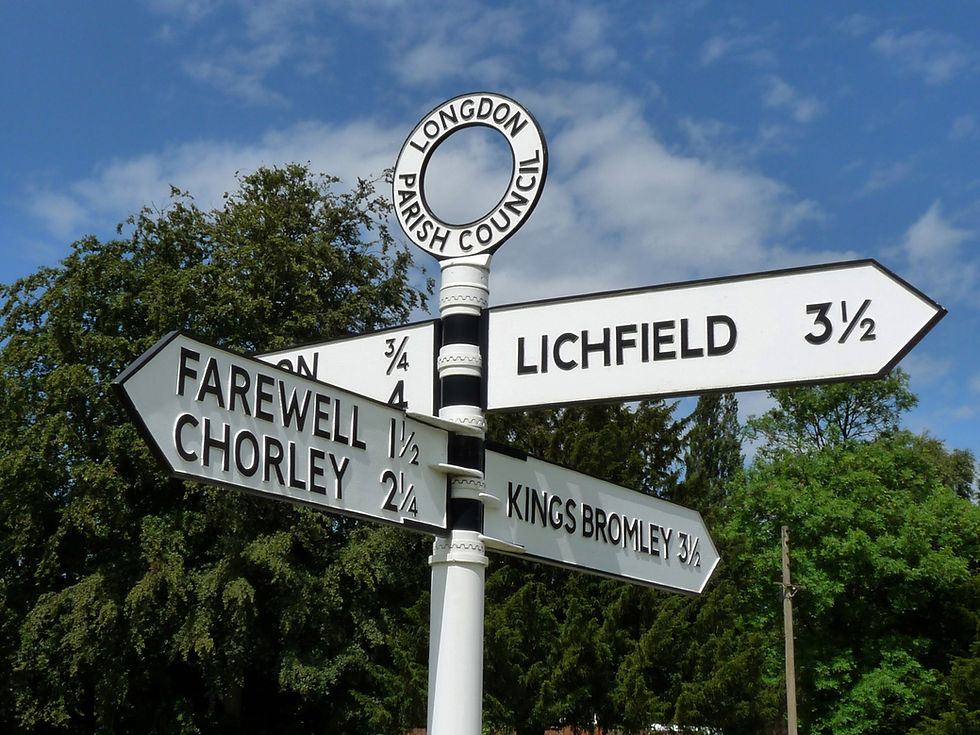01298 814941
Fletcher Foundry, Hallsteads Close, Dove Holes, Buxton UK
Download the Fingerpost & Signpost Catalogue
Bespoke Fingerpost Signs Crafted for Heritage & Modern Spaces
From traditional cast iron to contemporary designs, our fingerpost signs combine heritage quality with modern durability. Trusted by councils, architects, and landscape designers across the UK, we deliver bespoke wayfinding solutions with a fast turnaround.
Fingerpost Signs
Fingerpost signs and finger sign posts are a traditional type of directional signage, used since Roman times the cast fingerpost shows no signs of retiring yet! In 1697 magistrates in England were given powers to place direction posts at cross-highways & the oldest fingerpost still extant in is thought to dated around 1669.
Today, finger posts range from the classic Royal Label Factory signs often seen in the countryside, to ultra-modern contemporary designs for city centres and cutting-edge attractions. Our signs are installed at many of the well-known special places in the UK. The Finger post signposts have traditionally been made from cast iron/aluminium or wood, with the pole of the sign post painted in black, white or grey and each finger with black letters on a white background, which typically can include distance information too.


Discover over a century of craftsmanship in cast fingerposts, columns, and finials. Our catalogue showcases designs dating back to the 1920s through to today, with hundreds of patterns available. Whether you’re looking for inspiration or trying to match an existing design, there’s a strong chance we already have the perfect pattern for you.

OUR IN-HOUSE DESIGN SERVICE
- Heritage & Custom Fingerpost Signage
OUR IN-HOUSE DESIGN SERVICE
- Heritage & Custom Fingerpost Signage
Leander Architectural designs and manufactures contemporary, heritage and custom fingerpost signage that combine traditional craftsmanship with modern technology. Our in-house UK foundry and workshops is able to use computer-aided design, laser etching, and waterjet cutting, while also preserving heritage skills such as hand-carving in clay and traditional lettering — practised daily by our skilled team.
We work closely with architects, councils, heritage bodies, and contractors to create fingerpost signs that meet current regulations, suit their surroundings, and enhance wayfinding. Whether you need cast aluminium fingerposts, timber fingerposts, or modular directional signage, we provide expert guidance on materials, finishes, and design.
Every fingerpost sign is made from durable, weather-resistant materials to withstand the elements, and comes with a 1-year manufacturer’s warranty for peace of mind;
Bespoke design to match existing heritage signage or brand identity,
Fingerpost installation services by our skilled in-house team (by arrangement),
Guidance on commercial signage costs.
To discuss your project, browse our full range of fingerpost and directional signs, submit an enquiry online, or call 01298 814941 to speak directly with our design team.
.png)
- Discover over a century of craftsmanship in cast fingerposts, columns, and finials.
- Our catalogue showcases designs dating back to the 1920s through to today, with hundreds of patterns available.
- Whether you’re looking for inspiration or trying to match an existing design, there’s a strong chance we already have the perfect pattern for you.
Let’s Bring Your Project to Life
Whether you’re restoring heritage signage, commissioning a bespoke plaque, or planning a full wayfinding scheme, our experts are here to help. With over 140 years of craftsmanship, we’ll guide you through design, materials, and installation — making the process simple, fast, and tailored to your needs.
Tell us a little about your project today and one of our specialists will get back to you with advice, options, and a clear next step.
Discuss Your Project

A Highways finger signpost is usually similar to Pedestrian signs, but the text is larger and has to comply with Highways regulations. Guidance given in a 1921 circular stated that road direction signs should have 2 1⁄2 or 3 inch high (64 or 76 mm) upper case lettering on a white background with white supporting poles. It also recommended that the name of the highway authority be included somewhere in the design.
Historically these were all cast signs, or timber signs with cast letters – with a vast quantity produced by the Royal Label Factory. Many signposts and signs still survive and we have the knowledge and casting patterns to restore or re-create them.
Reacting to concern about the loss of historic finger posts from the rural landscape, the UK Department for Transport and English Heritage issued an advisory letter in June 2005 which stated that “All surviving traditional fingerpost direction signs should be retained in-situ and maintained on a regular basis. They should be repainted every five years in traditional black and white livery. Other colours should be used only when these are known to have been in use before 1940”. In recent years several county councils have embarked on restoration and repair programmes for their fingerpost stock, including the Highway Heritage Project in the Quantock Hills of Somerset.
As owners of one of the oldest pattern stock in the UK, Leander Architectural is uniquely positioned to assist
Fingerposts Pedestrian
Where signposts guide motorists, fingerposts guide pedestrians. Usually found in town centres, a good fingerpost network will link car parks and stations with all the main amenities and attractions. We’re often involved in planning new and updating/refurbishing pre-existing networks. While many of our systems are broadly traditional, we also design and supply bespoke fingerposts to suit specific requirements.























